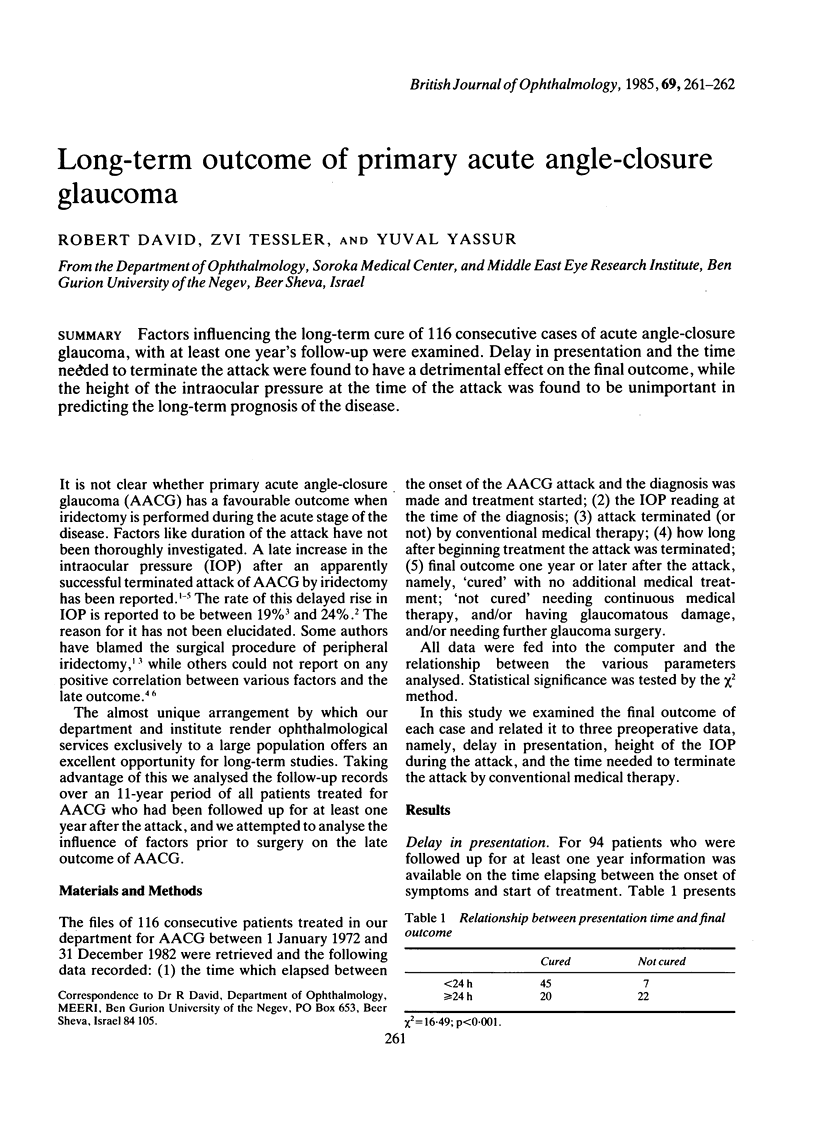Abstract
Factors influencing the long-term cure of 116 consecutive cases of acute angle-closure glaucoma, with at least one year's follow-up were examined. Delay in presentation and the time needed to terminate the attack were found to have a detrimental effect on the final outcome, while the height of the intraocular pressure at the time of the attack was found to be unimportant in predicting the long-term prognosis of the disease.
Full text
PDF

Selected References
These references are in PubMed. This may not be the complete list of references from this article.
- Floman N., Berson D., Landau L. Peripheral iridectomy in closed angle glaucoma-- late complications. Br J Ophthalmol. 1977 Feb;61(2):101–104. doi: 10.1136/bjo.61.2.101. [DOI] [PMC free article] [PubMed] [Google Scholar]
- Hillman J. S. Acute closed-angle glaucoma: an investigation into the effect of delay in treatment. Br J Ophthalmol. 1979 Dec;63(12):817–821. doi: 10.1136/bjo.63.12.817. [DOI] [PMC free article] [PubMed] [Google Scholar]
- Krupin T., Mitchell K. B., Johnson M. F., Becker B. The long-term effects of iridectomy for primary acute angle-closure glaucoma. Am J Ophthalmol. 1978 Oct;86(4):506–509. doi: 10.1016/0002-9394(78)90297-0. [DOI] [PubMed] [Google Scholar]
- Playfair T. J., Watson P. G. Management of acute primary angle-closure glaucoma: a long-term follow-up of the results of peripheral iridectomy used as an initial procedure. Br J Ophthalmol. 1979 Jan;63(1):17–22. doi: 10.1136/bjo.63.1.17. [DOI] [PMC free article] [PubMed] [Google Scholar]


